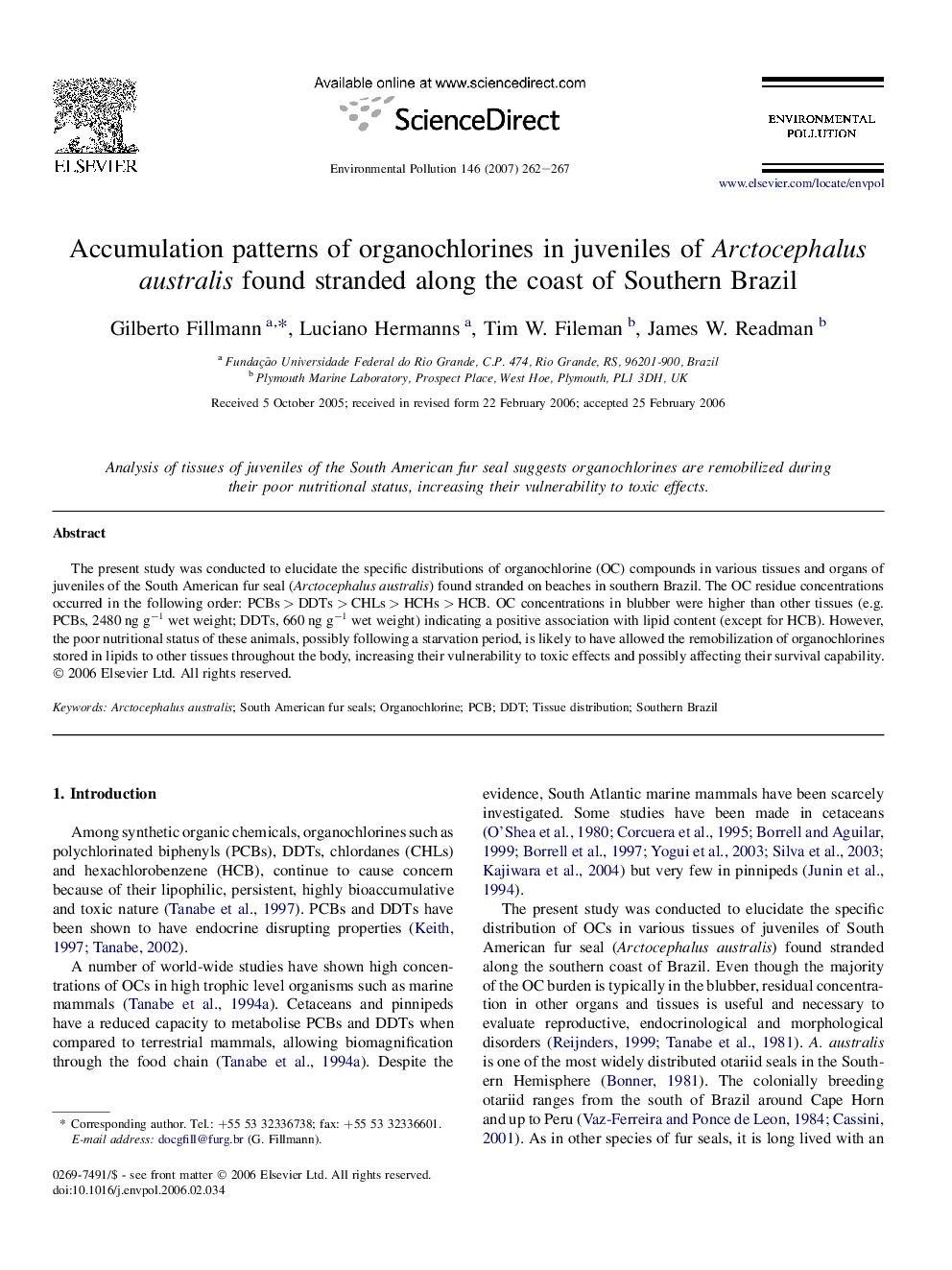| Article ID | Journal | Published Year | Pages | File Type |
|---|---|---|---|---|
| 4427393 | Environmental Pollution | 2007 | 6 Pages |
The present study was conducted to elucidate the specific distributions of organochlorine (OC) compounds in various tissues and organs of juveniles of the South American fur seal (Arctocephalus australis) found stranded on beaches in southern Brazil. The OC residue concentrations occurred in the following order: PCBs > DDTs > CHLs > HCHs > HCB. OC concentrations in blubber were higher than other tissues (e.g. PCBs, 2480 ng g−1 wet weight; DDTs, 660 ng g−1 wet weight) indicating a positive association with lipid content (except for HCB). However, the poor nutritional status of these animals, possibly following a starvation period, is likely to have allowed the remobilization of organochlorines stored in lipids to other tissues throughout the body, increasing their vulnerability to toxic effects and possibly affecting their survival capability.
